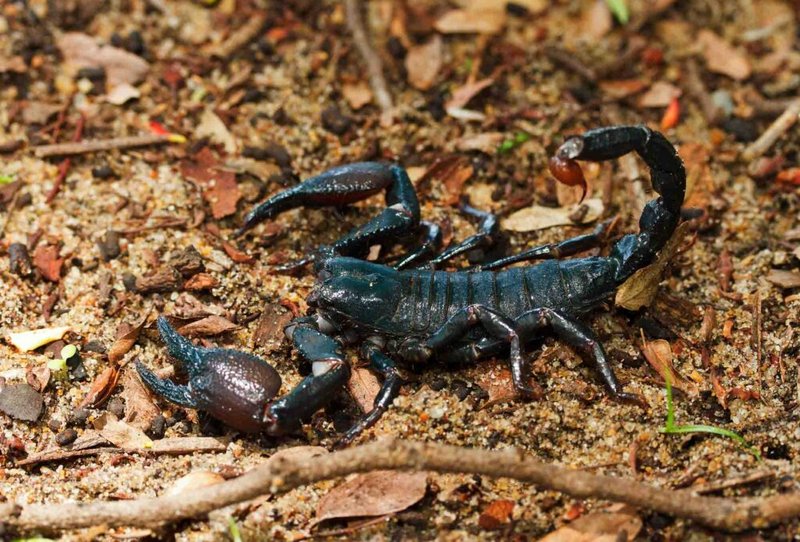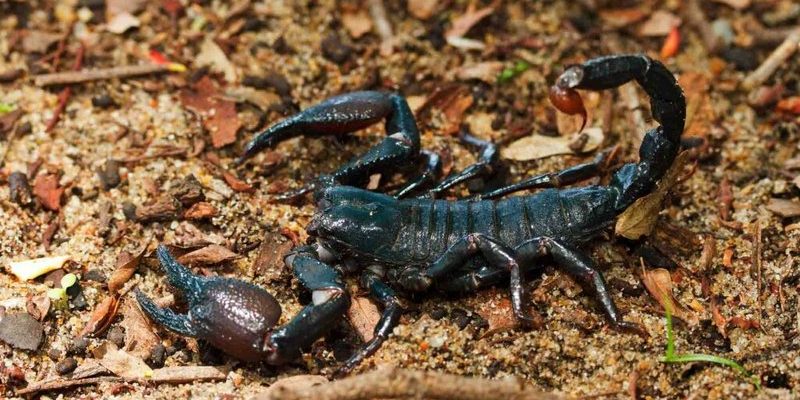
The Red Claw Scorpion, scientifically known as *Urodacus yaschenkoi*, isn’t your average scorpion. Found predominantly in Australia, these creatures have sparked the curiosity of many enthusiasts, researchers, and a few brave souls who keep them as pets. But understanding their level of venom and danger is essential for anyone who might come across them, whether in the wild or in a pet store.
What Exactly Is the Red Claw Scorpion?
The Red Claw Scorpion is a striking species known for its large, red pincers and dark, almost black body. They can grow to about 4-5 inches long, making them quite impressive to behold. Their habitat mostly includes arid regions, where they burrow underground to escape the heat. They prefer sandy or loose soil, which provides a cozy hiding spot during the hotter parts of the day.
In terms of behavior, these scorpions are nocturnal, which means they come out at night to hunt. They typically feed on insects, small reptiles, and sometimes even other smaller scorpions. It’s fascinating how they use their pincers to grab their prey, immobilizing it quickly. If you find one in your backyard, remember: while they might look fierce, they’re mainly concerned with finding their next meal!
Are Red Claw Scorpions Poisonous?
You might be surprised to learn that Red Claw Scorpions are indeed venomous, but not quite what you’d expect. Their venom is not particularly potent compared to other scorpion species. While they can deliver a sting that might hurt, it’s more akin to a bee sting for most people. You might experience pain, redness, and swelling at the sting site, but serious health risks are rare.
Here’s the thing: just because their venom isn’t deadly doesn’t mean it’s completely harmless. Individuals who are allergic to insect stings may react differently, experiencing more severe symptoms. If you’re one to swell up at the sight of a mosquito, you might want to think twice before handling one of these critters.
How Dangerous Are They to Humans?
Given their venomous nature, it’s reasonable to wonder just how dangerous Red Claw Scorpions are to humans. Luckily, the answer is relatively reassuring. For most people, the sting is merely an annoyance. However, there are notable exceptions depending on age, health, and individual sensitivity.
Let’s break it down:
- Adults: For most healthy adults, a sting from a Red Claw Scorpion can be painful but rarely dangerous.
- Children: Young children or those with pre-existing health conditions might experience heightened reactions, so caution is advised.
- Allergic Reactions: As mentioned, some may have allergic reactions that go beyond the standard pain and swelling.
If you do get stung, wash the area with soap and water, apply ice, and take over-the-counter pain relievers if needed. If symptoms worsen or if you experience any unusual reactions, it’s best to seek medical advice.
What Should You Do If You Encounter One?
Encountering a Red Claw Scorpion can be a startling experience, especially if you’re not expecting it. Here are some practical steps to take if you find one in your home or backyard:
1. Observe from a Distance: Stay calm and watch how the scorpion behaves. Most will retreat if left alone.
2. Do Not Attempt to Handle: Unless you’re experienced, avoid handling it. Use a container to trap it gently if necessary.
3. Call a Professional: If it’s in your home and you’re unsure about how to handle it, calling pest control might be the best option.
4. Educate Yourself: Understanding these creatures can make you less fearful and more appreciative of their role in the ecosystem.
Remember, they are more interested in avoiding humans than attacking!
Keeping Red Claw Scorpions as Pets
If you’ve developed a fascination with the Red Claw Scorpion, you might be considering keeping one as a pet. They can be interesting and relatively low-maintenance pets, ideal for those looking to dive into the world of exotic animals. However, there are some important factors to consider.
First off, their habitat needs to be carefully maintained. You’ll need a secure tank with proper ventilation, substrate for burrowing, and a controlled temperature. Scorpions are quite tolerant of varying conditions, but they thrive best in a warm environment. Providing them with proper food, like crickets and mealworms, will keep them healthy.
Also, be prepared for the responsibility. While they are not typically aggressive, having a scorpion means understanding their behavior and knowing how to handle them properly to prevent any accidents.
Final Thoughts on Red Claw Scorpions
So, is the Red Claw Scorpion poisonous or dangerous? Yes, they are venomous, but for most people, they aren’t particularly hazardous. Their sting can hurt, but it’s not life-threatening, except in rare cases. If you respect their space and understand their behavior, you can appreciate them without fear.
Whether you’re a curious nature lover or an aspiring pet owner, these scorpions are incredible creatures that serve an important purpose in their ecosystems. Just remember: with great curiosity comes great responsibility!

